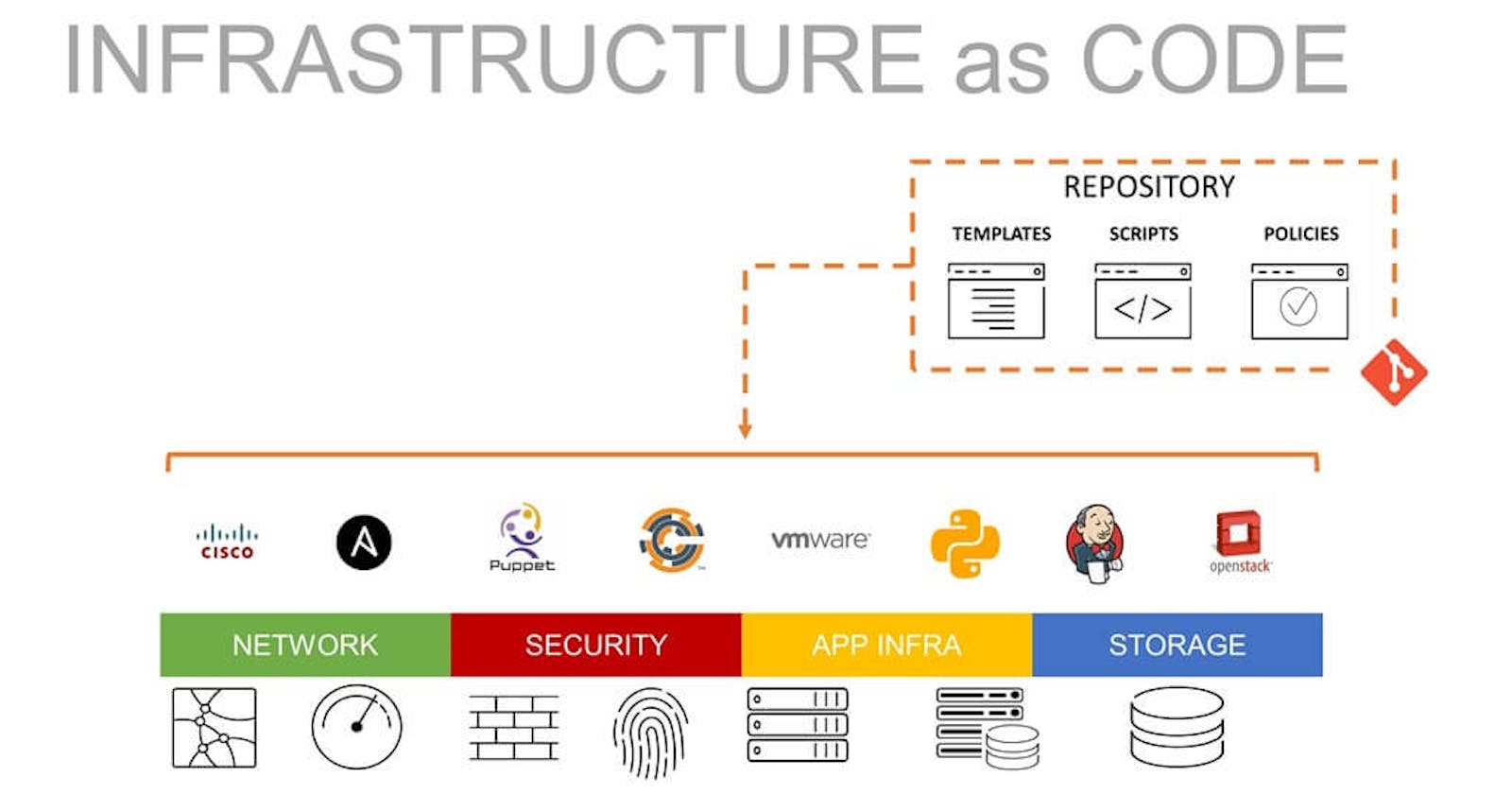Introduction:
In the realm of modern infrastructure management and application deployment, two essential practices have gained significant traction - Infrastructure as Code (IaC) and Configuration Management. These practices are critical for maintaining consistency, scalability, and agility in modern IT environments. In this blog, we will delve into the concepts of IaC and Configuration Management, highlight their differences with suitable examples, and explore the most common tools used for both practices.
Part 1: Infrastructure as Code (IaC):
Infrastructure as Code is a methodology that enables IT teams to manage and provision infrastructure resources programmatically using code. It treats infrastructure resources, such as virtual machines, networks, and storage, as code, which can be version-controlled, tested, and deployed like any other software application.
Advantages of IaC:
Consistency: IaC ensures that the infrastructure configuration remains consistent across all environments, reducing the risk of misconfigurations.
Reproducibility: By using code, the infrastructure can be easily recreated or duplicated in a new environment.
Scalability: IaC enables the automatic provisioning and scaling of resources, making it easier to accommodate changing demands.
Collaboration: IaC facilitates collaboration between development and operations teams, promoting DevOps practices.
Example: Terraform Terraform is a popular IaC tool that allows users to define infrastructure as declarative code using HashiCorp Configuration Language (HCL). Let's see an example of using Terraform to provision an AWS EC2 instance:
provider "aws" {
region = "us-west-2"
}
resource "aws_instance" "example" {
ami = "ami-0c55b159cbfafe1f0"
instance_type = "t2.micro"
}
Part 2: Configuration Management ::
Configuration Management involves managing and automating the configuration of software and applications on various servers and nodes in a consistent manner. It ensures that the desired state of the systems is maintained and automatically corrects any drift from the desired state.
Advantages of Configuration Management:
Consistency: Configuration Management tools ensure that software configurations remain consistent across all servers and environments.
Efficiency: Automated configuration deployment reduces the time and effort required for manual setups.
Auditing and Compliance: Configuration changes are tracked, enabling auditing and compliance with industry standards.
Centralized Management: Configuration Management tools offer a centralized platform for managing configurations.
Example: Ansible Ansible is a widely used Configuration Management tool that uses YAML-based playbooks to define configurations. Here's an example of an Ansible playbook to install and start an Nginx web server on remote servers:
name: Install and start Nginx
hosts: webservers
tasks:
- name: Install Nginx
apt:
name: nginx
state: present
- name: Start Nginx service
service:
name: nginx
state: started
Differences between IaC and Configuration Management:
Scope:
IaC primarily focuses on managing infrastructure resources, such as virtual machines, networks, and storage.
Configuration Management, on the other hand, deals with software and application configurations on servers and nodes.
Declarative vs. Imperative:
IaC is declarative, where the desired state of the infrastructure is defined, and the tool handles the provisioning and configuration process automatically.
Configuration Management is imperative, as the tool executes specific instructions to configure the desired state actively.
Use Cases:
IaC is suitable for setting up and managing cloud resources, data centers, and network configurations.
Configuration Management is ideal for managing application configurations, installing software, and performing system-level configurations.
Most Common IaC and Configuration Management Tools:
IaC Tools:
Terraform (for cloud infrastructure)
AWS CloudFormation (specifically for AWS resources)
Google Cloud Deployment Manager (for Google Cloud Platform)
Configuration Management Tools:
Ansible
Chef
Puppet
SaltStack
Conclusion:
Infrastructure as Code and Configuration Management are two vital practices that have revolutionized the way modern IT environments are managed and maintained. IaC focuses on automating infrastructure provisioning, while Configuration Management handles software and application configurations. Both practices improve consistency, scalability, and efficiency in the dynamic world of IT operations. The choice of tools depends on the specific needs and preferences of the organization, but popular choices include Terraform for IaC and Ansible, Chef, Puppet, or SaltStack for Configuration Management. By adopting these practices and tools, organizations can streamline their operations, reduce errors, and achieve a higher level of productivity and reliability.

